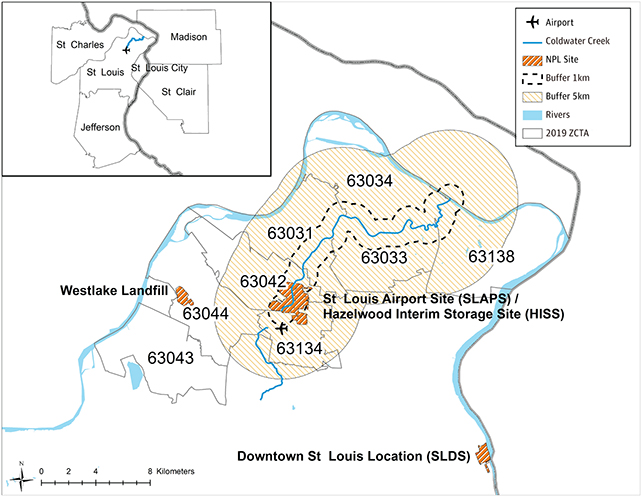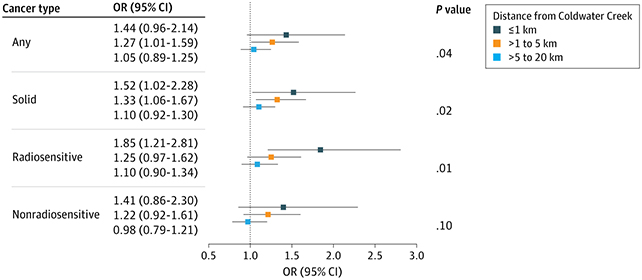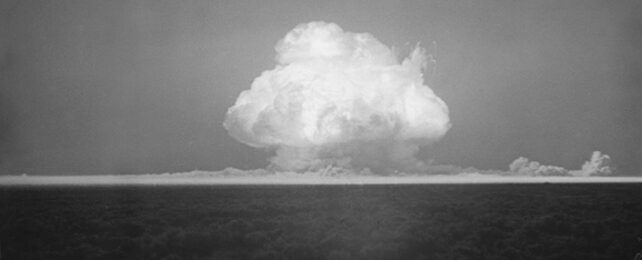Nuclear waste left over from US efforts to develop an atomic bomb from the 1940s and onwards put children living near St Louis, Missouri at a significantly elevated risk of cancer throughout the rest of their lives, a new study suggests.
As part of the top-secret scheme known as the Manhattan Project, radioactive waste from uranium refinement in St Louis was stored in drums or even left out in the open in a rural area north of the city, close to a tributary called Coldwater Creek.
That dangerous practice was only acknowledged in the late 1980s. In the new study, a research team led by scientists from Harvard University looked at the health records of people who had lived close to Coldwater Creek as kids.
Related: The World's First Nuclear Explosion Created a Rare Form of Matter
"Our research indicates that the communities around North St Louis appear to have had excess cancer from exposure to the contaminated Coldwater Creek," says environmental epidemiologist Marc Weisskopf from the Harvard TH Chan School of Public Health.
The researchers looked at data on 4,209 individuals who spent their childhood in and around Coldwater Creek, putting them into groups based on how close they lived to the creek. This was referenced against cases of cancer in the participants, now aged 55-77.
Overall, 24 percent or 1,009 of the participants reported having had cancer at some point. Of that subgroup, 30 percent lived less than one kilometer away from the creek.

To put it another way, living within a kilometer (nearly two thirds of a mile) of Coldwater Creek was linked to a 44 percent increase in the risk of developing cancer. Considering anyone who had already died of cancer couldn't be included in the study, the association might be even stronger.
While the data can't prove direct cause and effect, that the cancer risk was elevated nearer to the exposure site than at further distances strongly suggests the radioactive contamination from the creek negatively impacted the health of local residents.
"As we continue to recruit more participants… and continue follow-up of existing participants, we may soon be able to improve the precision of our estimates, as well as explore factors that could drive effect heterogeneity," write the researchers in their published paper.
The US Congress has just passed an expanded version of the Radiation Exposure Compensation Act (RECA) – through which citizens affected by radioactive fallout can claim compensation from the government – and Coldwater Creek is covered under the protections.

Previous investigations concluding that there was no link between cancer cases and Coldwater Creek were flawed, the researchers say. The key data in these earlier studies was based on modern-day residents, for example, not those who lived in the area as children.
The team behind the study not only wants to hold the US government accountable for the health risks caused in the past, but also to encourage greater caution in the future development of nuclear projects.
"These findings may have broader implications – as countries think about increasing nuclear power and developing more nuclear weapons, the waste from these entities could have huge impacts on people's health, even at these lower levels of exposure," says Weisskopf.
The research has been published in JAMA Network Open.
